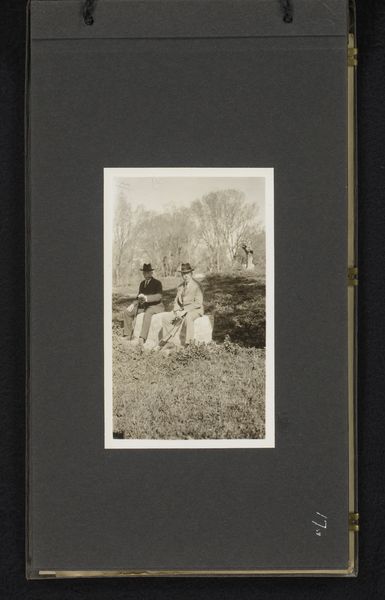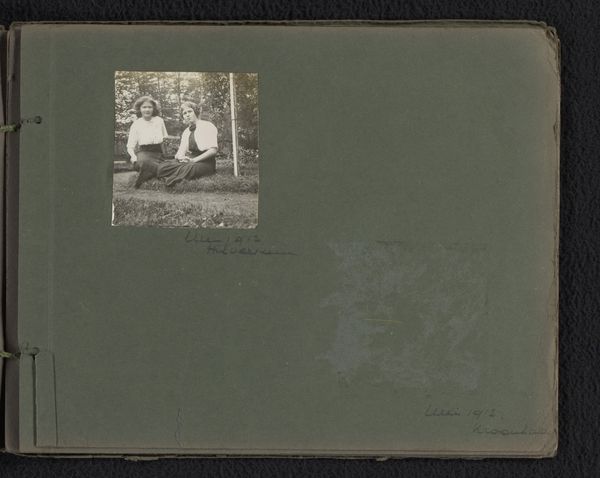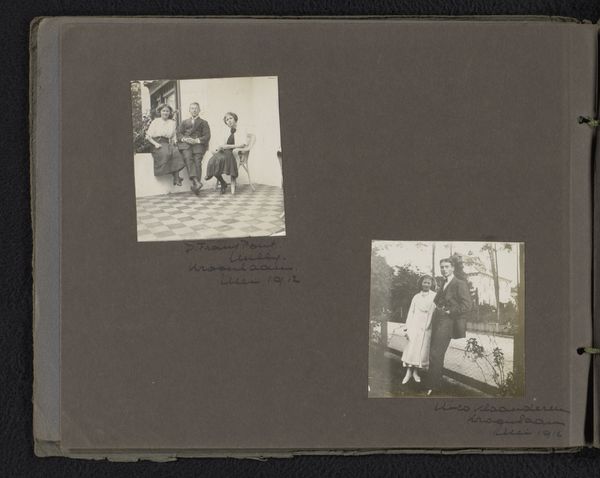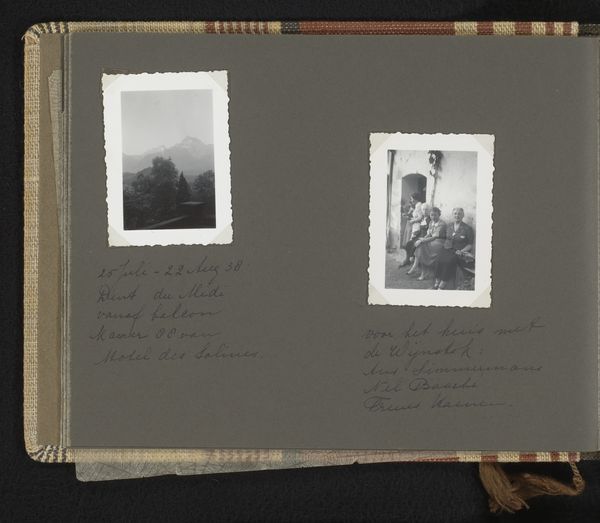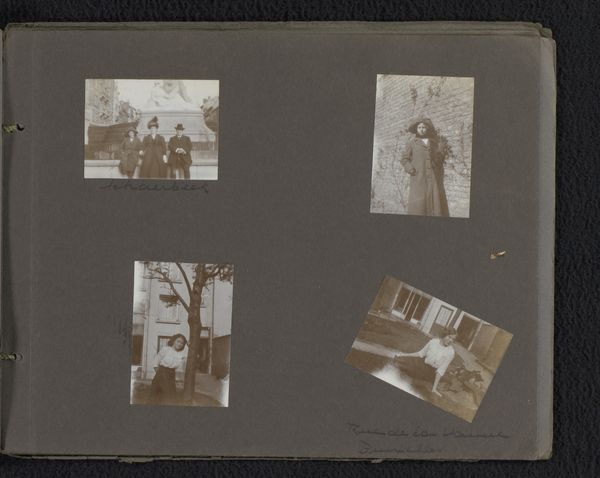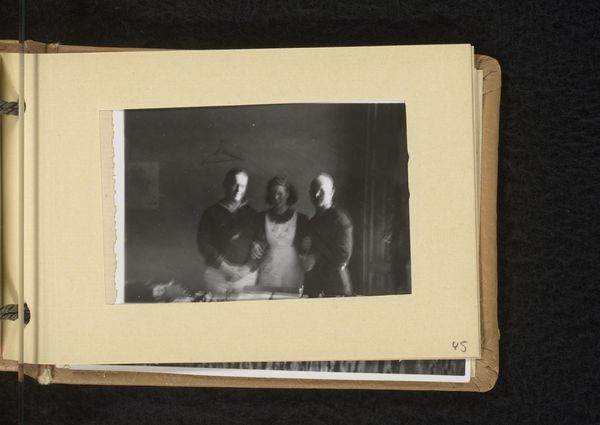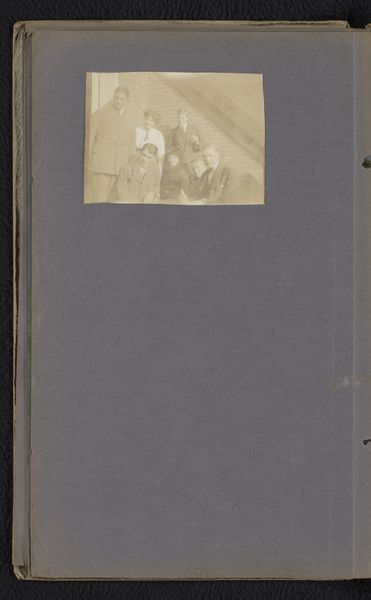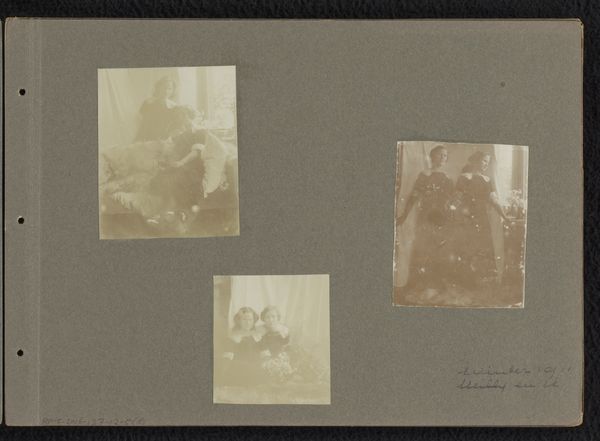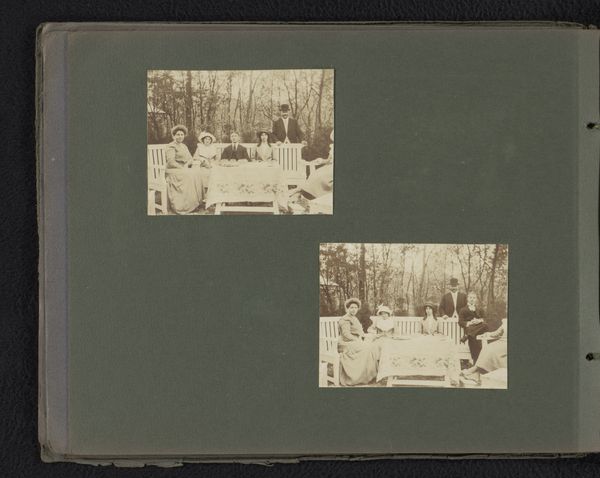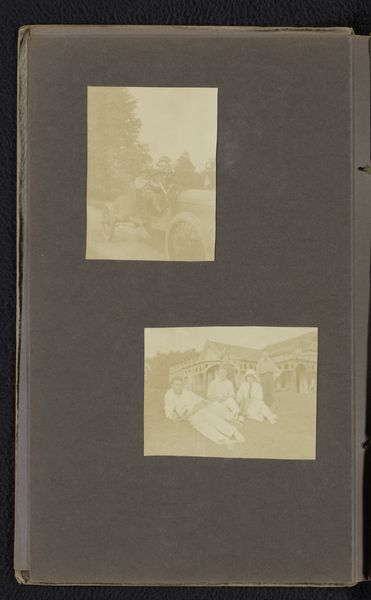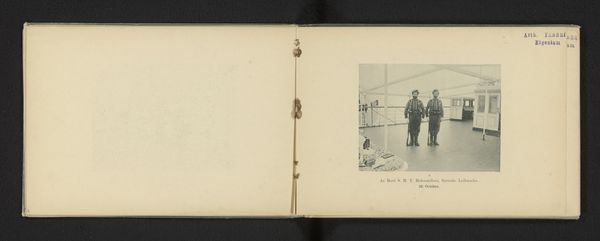
Else Wachenheimer-Moos drinkt koffie op een terras met haar broer Willy Moos, tijdens een vakantie van Eugen Wachenheimer en zijn echtgenote Else Wachenheimer-Moos door Zwitserland, augustus 1928, omgeving Montreux 1928
0:00
0:00
photography, gelatin-silver-print
#
portrait
#
still-life-photography
#
photography
#
gelatin-silver-print
#
realism
Dimensions: height 107 mm, width 84 mm, height 164 mm, width 210 mm
Copyright: Rijks Museum: Open Domain
Curator: This gelatin-silver print, dating from August 1928, is part of a photographic record documenting Eugen Wachenheimer and Else Wachenheimer-Moos's vacation in Switzerland. This particular image captures Else having coffee with her brother, Willy Moos, in the Montreux region. Editor: It’s a very crisp image, really—captures a feeling of a quiet, sun-drenched morning. There’s a stillness about it, a sense of posed formality. Curator: Given the date, the socio-economic context is important. It's the Weimar Republic era, marked by intense economic hardship. Even small acts like leisure become imbued with complex meaning—access, class, representation. Consider also the professional status conveyed in the photograph. Editor: Right, and how the choice of photographic process underscores those societal divides. Silver gelatin prints, mass-produced from glass negatives in professional studios, speaks volumes about their means and access. It also informs the narrative within the frame: note the tablecloth and clothing, and the implication of posed control over the photographic labor. Curator: Exactly. What's fascinating, too, is to ponder the original placement of the photograph and that visible script within its domestic archive. That casual moment of connection then moves toward the larger project of remembering—personal memory intersects with greater historical awareness. Editor: It definitely raises interesting questions about intention, doesn't it? It suggests an impulse to create a curated self-portrait. Curator: In these visual histories, families control and present themselves through a variety of lenses and materials, not just the aesthetic, so looking at photos such as this one is crucial. Editor: Definitely food for thought and worth remembering. Curator: Yes, I find I now see much more of it in relation to historical practices and meanings of material objects than I previously considered.
Comments
No comments
Be the first to comment and join the conversation on the ultimate creative platform.
